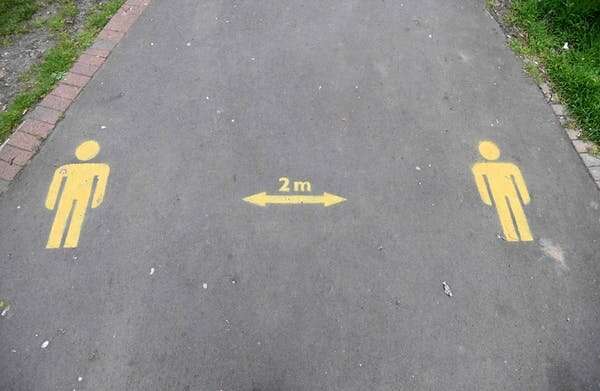
Within four months, the UK will have 66,314 fatalities from COVID-19, according to a recent report from the University of Washingon’s Institute for Health Metrics and Evaluation (IHME). This would result in the UK having the highest number of fatalities out of any country in Europe—according to the report, more than Italy (a total of 23,000) and Spain (19,209).
At first glance, this new model seems to suggest that the situation in the UK is significantly worse than appreciated. But in the past two weeks, we have seen several other predictions, including an Oxford University model that suggests that more than half the UK population may already have been infected and an Imperial College model that predicts up to 260,000 fatalities from COVID-19 if the government had taken no action.
Based in part on the data from the Imperial study, the UK government adjusted its COVID-19 strategy and began introducing closures and physical distancing measures. The Imperial model predicts that with these measures (including school closures, stay-at-home orders and physical distancing for the entire UK population) the number of fatalities might only reach 20,000.
Only as good as your data
Prediction models are just estimates of what might happen and a model is only as good as the data that goes into it. The IHME model is based on the current rate of COVID-19 fatalities in a given country. This contrasts with many other models, which predict fatality rates by extrapolating from the number of reported cases, of which we have more data but of questionable accuracy (see below).
In Italy, the IHME model may be very accurate as there is a large amount of data on fatality rates over time. Yet in the UK there is a limited timeframe of COVID-19 fatalities and so less data with which to estimate future trends.
The IHME is planning to continually update its model using new data, so the model will probably become more accurate over time. But at present, the limited amount of data means that the IHME model has a large range of possible outcomes, ranging from 14,572 to 219,211 deaths in the UK. This puts the IMHE and Imperial models in roughly the same range.
A lack of accurate data
All current COVID-19 prediction models suffer from a lack of accurate data on case numbers and fatality rates. This is because many COVID-19 infections are mild, or potentially even asymptomatic, and are often not identified as confirmed cases.
Estimates are that up to 86% of cases may not be identified as COVID-19. This number may be even higher in countries such as the UK that have only been testing the most critical and at-risk cases. Without knowing the actual number of infections, it is not possible to determine an accurate case-fatality rate and so the accuracy of many predictions is limited.
The IHME model attempts to avoid this limitation by focusing only on fatalities. But there is a similar concern that not all COVID-19 fatalities are being accurately reported. For example, people who pass away at home having never been tested for COVID-19 may not be included in some counts. Additionally, the IHME model may miss new hot spots of infection, as fatality numbers lag behind case numbers by one to two weeks.
At present, both case-based and fatality-based prediction models are limited by the amount and quality of the available data.
The worth of models?
While these models may not be able to accurately predict the specific number of COVID-19 fatalities over the coming months, they still offer a useful glimpse of potential futures. For example, in none of the predictions for the UK do we see fewer than 14,000 fatalities or more than 260,000 (if no interventions were taken). This gives a context for policy decisions and our collective actions.
We like being able to quantify things and it is easier to convince people of the importance of physical distancing if we can say that it will save 236,000 lives.
Source: Read Full Article